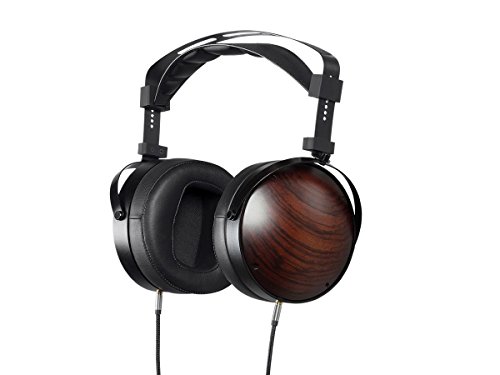20 Things You Must Know About Driver Planar
페이지 정보
작성자 Cathleen 작성일24-03-26 03:13 조회19회 댓글0건본문
 The Difference Between Driver Planar and Dynamic Drivers
The Difference Between Driver Planar and Dynamic DriversAudiophiles are attracted to two primary driver technologies when it comes high-quality headphones or IEMs: Planar Magnetic and Dynamic Drivers. Both provide unique features that enhance the listening experience.
 The planar magnetic technology is primarily used in high-end headphone and IEM models. Its sound quality is impressive with incredible clarity and distinction.
The planar magnetic technology is primarily used in high-end headphone and IEM models. Its sound quality is impressive with incredible clarity and distinction.High-quality sound
A driver planar is a distinct kind of audio speaker that uses an extremely thin diaphragm to create sound. The technology is employed in earbuds and headphones, and produces high-quality sound that is more accurate than dynamic drivers. This technology allows for an extensive range of frequencies, which provides an authentic audio experience. It has a quicker reaction time, so it can reproduce sounds that move quickly.
In contrast to other speakers that make use of domes and cones to produce sound, the driver planar has a diaphragm with a thin diaphragm which vibrates in response to electrical impulses. This creates a full, precise sound that is perfect for audiophiles. Driver planars also reproduce sound at a higher frequency than dynamic speakers. This is essential for audio with high-fidelity.
There are many different types of headphones drivers, however the planar driver is the ideal option for audiophiles. These drivers are available in a variety of IEMs headphones, as well as ones that fit comfortably in your ear. They can also be utilized in home theater systems and other devices that require a powerful sound system.
The driver planar is a more intricate design than traditional dynamic drivers and requires more power to run. Audiophiles will appreciate the higher cost but the better sound is worth it. It also has a longer life than traditional dynamic drivers, Immerse In Audiophile Delight With HiFiMAN Ananda meaning you can expect to enjoy your headphones for a long time.
Although many audio enthusiasts have heard of the advantages of a planar magnetic driver they might not be aware of how it works. The fundamental principle is that the magnetic field is parallel to the diaphragm, which results in a more natural and precise sound than traditional dynamic drivers. This also means that the diaphragm will be less likely to become distorted, which can result in a muddy sound.
Despite the numerous benefits of a planar sound system, some users complain that they do not have enough bass or punch. The diaphragm cannot move as fast as dynamic drivers. The magnets in a planar drive may create hard angles, which can cause reflections and diffractions. These problems can reduce detail retrieval and cause distortion. Fortunately manufacturers have come up with ways to solve this issue.
Wide frequency response
Planar magnetic drivers are a cutting-edge audio technology which offers more frequencies than dynamic drivers. It consists of a thin diaphragm with an electrically conductive layer which is situated between two rows of magnets. When an electric current passes through the conductive layer it interacts with the magnets, causing the diaphragm to vibrate. This causes sound waves to be released. You can hear this sound when you listen music. The large frequency range of a planar driver makes it easy to listen to a range of music genres without distortion.
While most IEMs and headphones utilize a traditional dynamic driver, the planar magnetic driver has gained acclaim for its wide frequency response and incredible bass. Its diaphragm, which is flat, is designed to be more responsive than traditional cone-shaped dynamic drivers which results in better clarity and depth of sound. This is especially important for bass and high frequency frequencies that are difficult to reproduce accurately with conventional dynamic drivers.
Planar magnetic planar speakers drivers are able to reproduce transients more precisely and with less distortion. They also have a faster reaction time. They also offer an authentic soundstage and high-definition details. In recent years, many manufacturers have incorporated planar and dynamic drivers to create hybrid IEMs which offer the best of both worlds. These hybrids blend the precision of a planar driver with the dynamics of a typical dynamic IEM, creating an unbalanced sound that appeals to audiophiles with diverse preferences.
Hidizs MP145 is an excellent pair of IEMs with planar design that provide an immersive, rich audio experience. Its timbre accuracy and ultra-wide frequency range are impressive, and its sound volume is higher than that of other IEMs in its class. In addition, its patented sapphire-evaporation composite flexible suspension diaphragm guarantees a smooth, wide-band response and super performance.
The MP145 is a lightweight, comfortable IEM that is perfect for Immerse In Audiophile Delight With HiFiMAN Ananda long listening sessions. The open-back design eliminates the effects of acoustic and pressure and the frequency response curve has been re-calibrated to the highest standards. It also features a high-grade removable cable that is noise-free with a 3.5mm plug as well as a comfortable carrying pouch.
Less distortion
The most effective headphones with planar magnetic drivers deliver stunning sound quality, making them the perfect choice for audiophiles as well as professionals. Compared to dynamic driver headphones, they produce less distortion and have better transient response characteristics. They also have a greater frequency range and are able to reproduce more detail with greater precision. In terms of bass, these headphones are the best in their class and provide a rich and loud sound.
The reason that planar magnetic headphones have significantly less distortion than their dynamic counterparts is due to the fact that their diaphragms are much thinner and lighter. This makes them more flexible and capable of be able to move Immerse in audiophile delight with hifiman Ananda a uniform way when an electrical signal is received. Contrary to this dynamic diaphragms are rigid and stiff, and is able to only move in one direction. This causes a tiny amount of distortion that is more noticeable in lower-quality dynamic drivers.
Planar magnetic headphones have a much faster reaction time. Dynamic drivers can take an extended time to respond to a signal, whereas planar magnetic headphones have quicker response times. This means that they can reproduce sounds faster and with greater accuracy and precision. They also have lower sound floors and are more comfortable for long-term wear.
Planar magnetic headphones have a greater image separation clarity, quality and sound quality. This is particularly evident in high-end models, such as the Audeze LCD-4 and HiFiMAN Susvara. They can separate individual instrument lines and provide more details than dynamic driver headphones, and generally appear more natural and transparent.
However, it is to be noted that planar magnetic headphones are more expensive than their counterparts with dynamic drivers, because they require more complex engineering to produce. They are heavier and bigger due to the larger magnets. You will need a DAC that has enough power for them to work effectively. Fortunately, balanced outputs on many DAPs and dongles allow you to run these headphones without straining your audio gear.
Responsiveness
A planar magnetic driver is comprised of only one diaphragm that is flat, which moves more uniformly. This is contrasted with the traditional dynamic driver which has many mechanical components that may come into contact. It is able to reproduce transients with greater speed and accuracy. This is an excellent feature if you listen to music that has a lot of layers and changes. Another benefit is that it helps reduce distortion when playing at higher volumes, which can often be a problem with traditional drivers.
This makes a planar magnetic device a very good option for audio equipment that needs to last and be durable like headphones or portable music players.
댓글목록
등록된 댓글이 없습니다.



